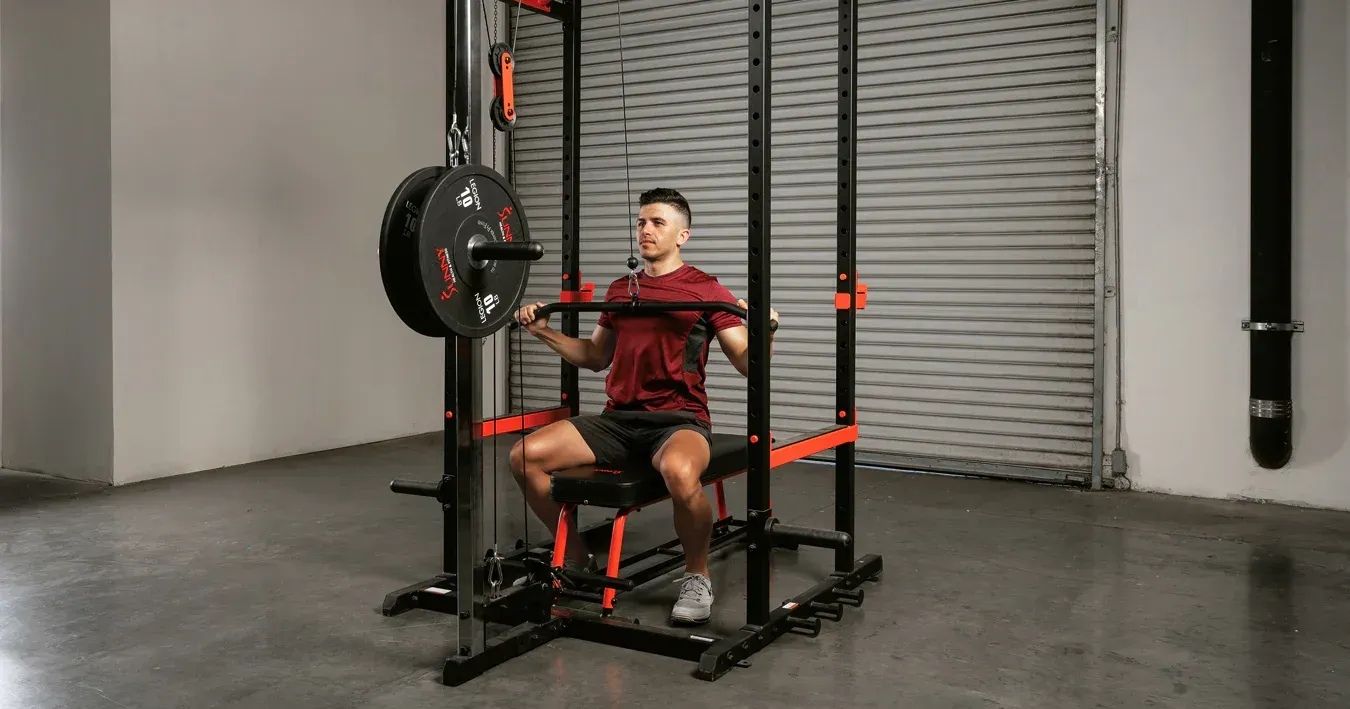Lateral Raises: Fixing Common Mistakes for Better Results
If you’re looking to sculpt strong, defined shoulders, lateral raises are a must-have exercise in your workout arsenal. This seemingly simple movement targets the lateral deltoids, giving your shoulders that coveted “capped” look.
However, despite its simplicity, many gym-goers unknowingly make mistakes that can hinder their progress or even lead to injury. In this guide, we’ll cover common errors in lateral raises and provide tips to ensure you get the most out of this essential exercise.
Understanding Lateral Raises
Lateral raises primarily target the lateral (middle) head of the deltoid muscle, which is responsible for shoulder abduction – moving your arms away from your body. When performed correctly, this exercise not only builds shoulder strength but also improves stability and enhances aesthetics.
The movement involves lifting dumbbells or cables out to your sides while keeping a slight bend in your elbows. Despite its straightforward nature, achieving proper form can be tricky.
Common Mistakes in Lateral Raises
Let’s break down the most common errors people make and how to fix them for optimal results.
1. Using Too Much Weight
The Mistake:
Many lifters choose weights that are too heavy, sacrificing form in favor of ego. This often leads to swinging or using momentum, which takes tension off the deltoids and shifts it to other muscle groups like the traps.
The Fix:
- Start with lighter weights that allow you to maintain control throughout the movement.
- Focus on proper form and controlled reps instead of maximum load.
- Remember, the lateral raise isn’t a power movement – it’s about isolating the deltoid.
2. Engaging the Traps Instead of the Delts
The Mistake:
If you feel the burn more in your upper traps than in your shoulders, it’s likely because you’re shrugging your shoulders during the lift.
The Fix:
- Start with lighter weights that allow you to maintain control throughout the movement.
- Visualize leading the raise with your elbows, not your hands. This helps maintain focus on the deltoids.
- Avoid lifting the dumbbells too high – aim for shoulder level.
3. Bending the Wrists
The Mistake:
Allowing your wrists to bend can cause discomfort and shift the focus away from the target muscle.
The Fix:
- Keep your wrists neutral and in line with your forearms.
- Grip the dumbbells firmly but avoid squeezing too hard, which can lead to unnecessary tension in the wrists.
4. Lifting Too High
The Mistake:
Lifting the dumbbells above shoulder height reduces tension on the delts and can place stress on the shoulder joint, increasing the risk of injury.
The Fix:
- Stop the lift when your arms are parallel to the floor. This ensures continuous tension on the deltoids.
- Use a mirror or ask a trainer to check your range of motion.
5. Swinging the Dumbbells
The Mistake:
Momentum is often used to “cheat” during lateral raises, especially as fatigue sets in. This reduces the effectiveness of the exercise.
The Fix:
- Slow down your reps. The movement should be controlled on both the upward and downward phases.
- Engage your core to stabilize your body and minimize swaying.
- If you find yourself swinging, lower the weight.
6. Incorrect Arm Position
The Mistake:
Allowing your arms to drift too far forward or backward shifts the focus away from the lateral deltoid to other muscles like the front deltoid or traps.
The Fix:
- Maintain a slight forward lean in your torso to keep the arms aligned with the lateral delts.
- Think about moving your arms in a straight line out to your sides, not forward or backward.
Tips for Perfect Lateral Raises
Now that we’ve covered what not to do, here are some additional tips to elevate your lateral raise game:
- Choose the Right Equipment:
- While dumbbells are the go-to for lateral raises, cables and resistance bands can provide a constant tension that’s great for muscle activation.
- Explore premium fitness equipment like adjustable dumbbells or specialty handles from brands like Mavinpro for an elevated experience.
2. Engage Your Core:
- A strong, stable core prevents your torso from swaying and keeps the focus on your shoulders.
- Stand with your feet shoulder-width apart and brace your abs.
3. Adjust for Weaknesses:
- If one shoulder is weaker, perform unilateral (one-arm) raises to balance strength and muscle development.
4. Add Variations:
- Try leaning lateral raises, lying lateral raises, or using cables to target the delts from different angles and keep your routine fresh.
5. Mind-Muscle Connection:
- Focus on feeling the lateral deltoid working throughout the lift. Visualize the muscle contracting and lengthening with each rep.
Progression And Programming
Lateral raises are best performed with moderate to high reps (10-15) and controlled tempo. Since the deltoids are relatively small muscles, they respond well to higher volume. Incorporate lateral raises into your shoulder or upper body day for 3-4 sets.
Elevate Your Home Gym with Mavinpro
Whether you’re perfecting your lateral raises or working on other fitness goals, having the right equipment is crucial. Mavinpro’s range of compact, high-quality gear – from adjustable benches to space-efficient racks – ensures you can train effectively without compromising on form or functionality. Explore their offerings to take your training to the next level.
Final Thoughts
Lateral raises are a fantastic exercise for building strong, aesthetic shoulders – but only if performed correctly. By avoiding common mistakes and focusing on form, you’ll maximize the effectiveness of this movement while reducing the risk of injury. Remember, quality always trumps quantity when it comes to isolation exercises.
Invest in the right equipment, such as the Mavinpro Power Rack or adjustable dumbbells, to ensure a safe and efficient workout environment. With consistent effort and proper execution, your shoulders will thank you!





